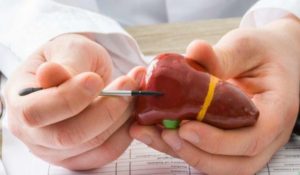Polycystic Liver : Symptoms, Causes and Treatment
What is Polykystic Hepatitis? Most affected patients have cysts on the liver, the number of which is likely to increase with age. These cysts do not prevent the liver from functioning. Occasionally, polycystic liver disease (PLD, with the dominant gene) occurs as an isolated disease: cysts are present on the liver, but the kidneys are not affected. You can join the center Afrique Santé Bio to get cure or to have more informations.
What is Polycystic liver Disease?
What is Polykystic Hepatitis? Natural cure for Polykystic Hepatitis. Autosomal dominant polycystic hepatorenal disease is a genetic disease (linked to a dominant gene – PKD1 – or linked to a recessive gene – PKD2, and more rarely to the GANAB gene). It results in the development of cysts in the kidneys, which can lead to kidney failure treated by dialysis and/or kidney transplantation.
What causes Polycystic liver Disease?
To keep it short and simple you must know that almost all liver cysts are congenital, meaning they are present at birth. Health care providers are not sure what causes congenital liver cysts. For more information you can click on Afrique Santé Bio to discuss with Doctor ZOUGNON or Mr WOROU.
What are the Symptoms of Polycystis Hepatitis
Most people with benign or cancerous liver cysts never have symptoms. Those who do have the
- Swollen or distended abdomen.
m may experience the following symptoms:
- Pain in the upper right side of the abdomen.
- Nausea and vomiting.
- Loss of appetite or feeling full after eating very little food.
- Feeling short of breath.
- Feeling the possibility of a large ball in the abdomen.
- Jaundice. This can happen if a liver cyst is blocking the bile ducts.
- Fever and severe abdominal pain. This can happen if a cyst ruptures.
How is Polycystic diagnosed? What is Polykystic Hepatitis?
What is Polykystic Hepatitis? Often, health care providers find liver cysts during imaging tests for other conditions. Imaging tests that show liver cysts include:
- Ultrasound. Ultrasound uses high-frequency sound waves to create real-time images and videos of your internal organs or other tissues.
- Computed tomography (CT) scan. A CT scan uses a series of X-rays and a computer to create 3D images of soft tissue and bone.
- Magnetic resonance imaging. (NMR). This painless test uses large magnets, radio waves and a computer to create very clear images of body organs and structures.
- When healthcare providers find liver cysts on imaging tests, they can do the following to diagnose or rule out conditions such as precancerous or cancerous liver cysts, polycystic liver disease, or liver cysts caused by parasites.
How is Polycytic Hepatitis treated? What is Polykystic Hepatitis?
Most benign or simple liver cysts don’t need to be treated. But healthcare providers may remove benign or simple liver cysts that grow larger than 4 centimeters across.
They are a lot of Procedures and surgeries to remove large benign cysts, cysts caused by polycystic liver disease and precancerous or cancerous liver cysts include. But the best way is the use a natural treatment. So connect with traditional Doctor.
To contact us: Afrique Santé Bio for WhatsApp or call: +22962020343

Recent Comments